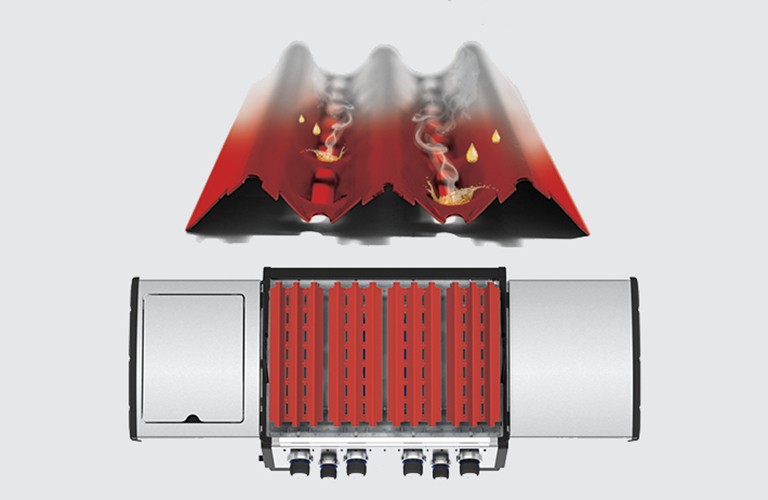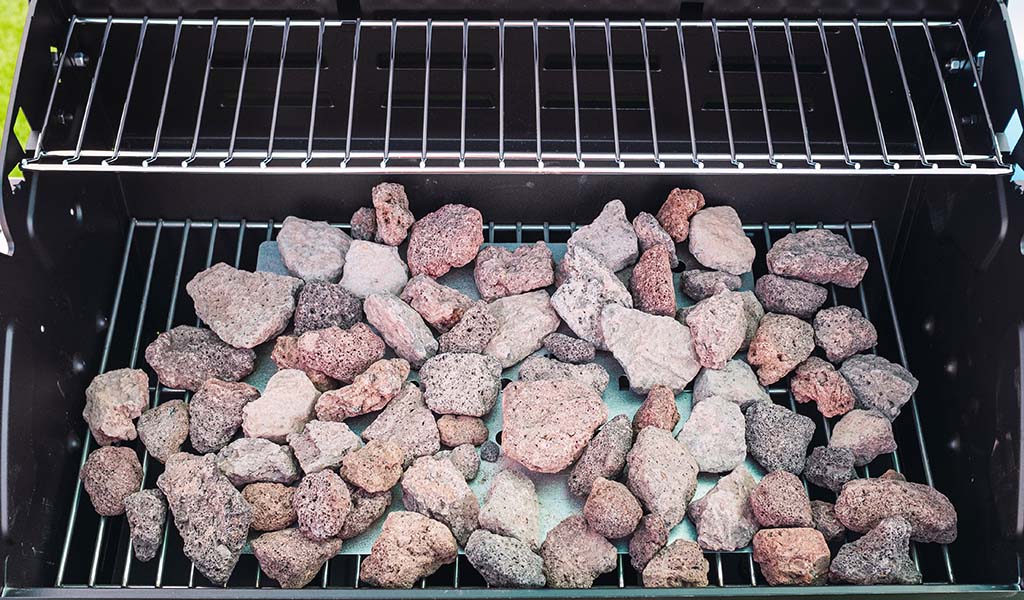
It may surprise some of you, but the question about lava rocks still comes up fairly often. From time to time, we even see people putting lava rocks on top of the heat plates in their gas grills.
So, do gas grills still need lava rocks? Nope! Your gas grill comes equipped with heat plates that perform the critical job of vaporizing juices resulting in barbecued flavour. In fact, using them could end up damaging your grill’s components. Keep reading to learn more about the technological evolution from rocks to metal.
Why don’t gas grills use lava rock anymore?
That hot surface in a gas grill, above the burners and below the cooking grates, is called the ‘heat plate’ or ‘heat tent.’ Most manufacturers name heat plates by combining the word ‘flavour’ and a description of the heat plate’s shape, e.g. Flavour -bars, -tents, -plates, and what have you. At Broil King, we call them Flav-R-Waves because of their unique wave shape.
What do heat plates do? They absorb and disperse heat from the burners to evenly heat the cooking surface. Heat plates also protect the burners from drippings and provide a vaporization (or flavour infusion) effect to ensure you get authentic barbecue flavour when grilling on a Broil King gas grill.
How does flavour vaporize and infuse in food?
In the beginning, there was fire and meat on a stick. Drippings from the meat fell onto the fire and vaporized into a smoky flavour that would rise and stick to the meat. That’s a delicious start, if I do say so myself. In the last 75 years, gas grill manufacturers have experimented with various heat media to replicate this vaporization process with varying degrees of success. Let’s take a quick look.
First, there was good old lava rock. These large, porous volcanic rocks were placed above the burners on a rack. They would absorb and radiate heat with the intensity of the burner. They provided adequate surface area to vaporize juices and relatively even heat. However, because lava rocks are porous, they would soak up juices, grease, and other drippings like a sponge, and there was no good way to clean them. They also didn’t protect the burner below, and burner rot was a constant issue. The result? They transfer flavours from past meals to future meals in the most unappetizing way. Gross.
Then there were deluxe ceramic briquettes and several different iterations: the pillow style, pyramid-shaped, and honeycomb. They were meant to deliver more even heat than lava rock, better vaporization, and, most innovatively, self-cleaning when hot. Unfortunately, ceramic briquettes were brittle, and the ceramic would deteriorate over time. They were easy to break in transit or upon installation. These manufactured shapes were much more expensive to create than their lava rock predecessor. Briquettes also didn’t solve the burner rot issue since drippings could still rain onto the burner.
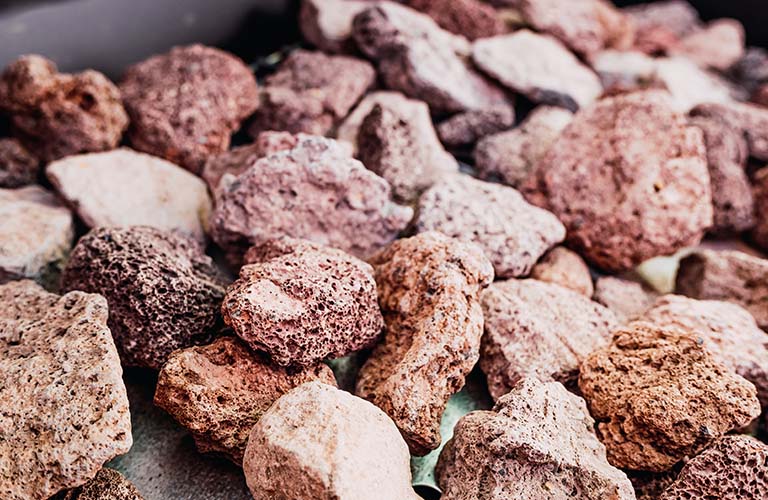

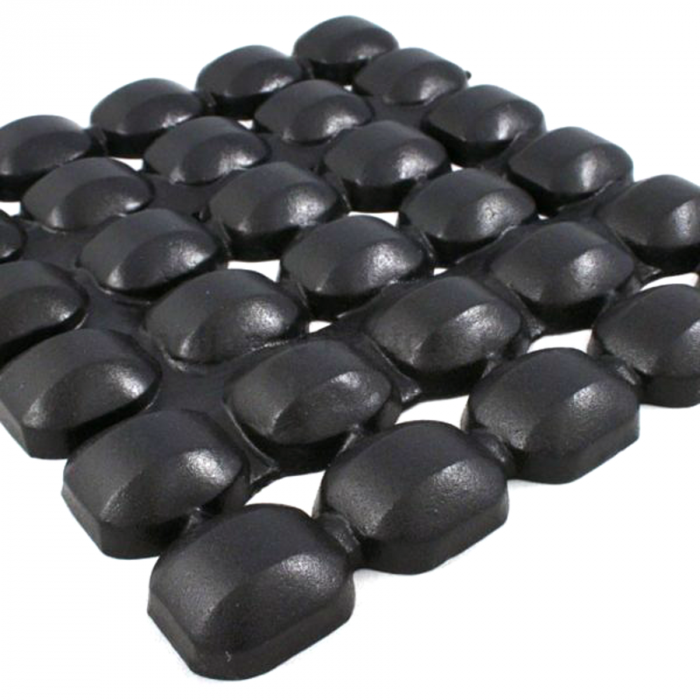
On a Broil King history note, we introduced our own Broil King Flav-R-Cast, in the early ’90s. It was a cast-iron plate shaped like pillow ceramic briquettes! It was heavy and delivered excellent vaporization and heat retention but would slowly rust away under the abuse of heat and salty-sugary grill juices—certainly a unique alternative at the time.
Ultimately, many gas grill manufacturers settled on the very common tent-style burner covers that you see today. They’re made of stainless or porcelain-coated steel and run front to back (they used to run side to side). They create moderately even heat and protect the burner from drippings. Surprisingly most heat tents protect the burner and shear juices away quickly. While the lava rock and ceramic predecessors filled the cook box side to side and front to back, these new tents didn’t fill the entire cook box. Many of the juices that would typically be vaporized dripped straight into the drip tray below.
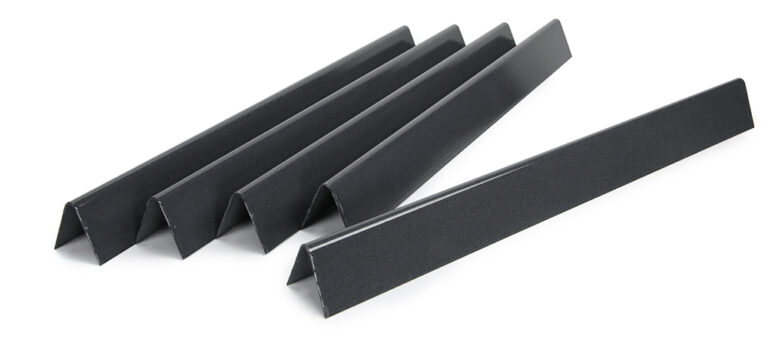
The Innovative Flav-R-Wave
The stainless steel Flav-R-Wave cooking system maximizes surface area, with just 6mm between plates that fill the entire cook box. All this extra steel creates a total surface radiant heat bubble at the bottom of the cook box for more consistent, even infrared grilling.
This is what even heat looks like under a heat camera. The bright spots are intense radiant heat perfect for grilling. The dark areas are drainage, juices that fall there are bound for your drip tray and aren’t flavouring your food.
The perfect 32-degree slope of the Flav-R-Wave is like a shallow-pitched roof; juices will slowly roll off and vaporize as they roll. A steep-pitch heat tent would shear drippings away quickly before they could vaporize into flavour.
What you see in the photo to the right is vaporization, the flavour that makes grilled food stand out from anything you can cook in the kitchen. It’s smoky and sticky. This vaporization process is mainly responsible for creating that delectable and distinct “BBQ” flavour.
Although we left lava rock in the stone age, we didn’t forget its purpose in your grill. Every gas grill needs that super hot surface to create the perfect grilled flavour and as much of it as possible. The Flav-R-Wave is our current solution for amazing grilled flavour, and we’re very excited to see what comes next.
